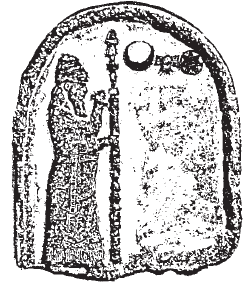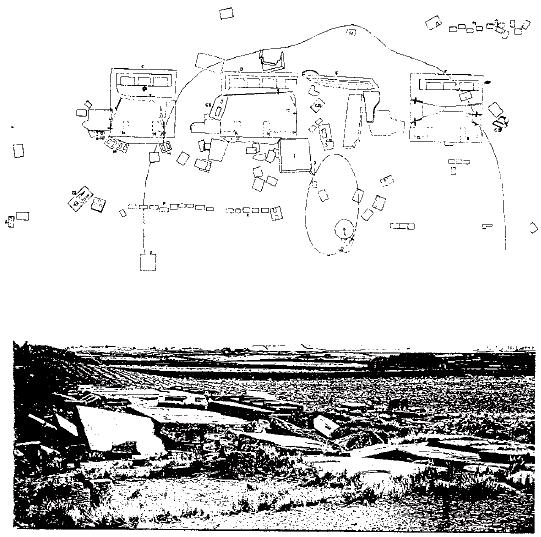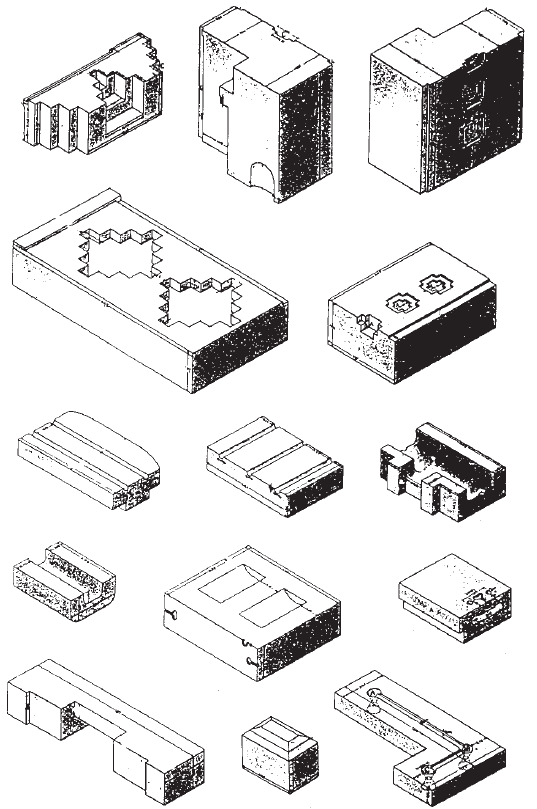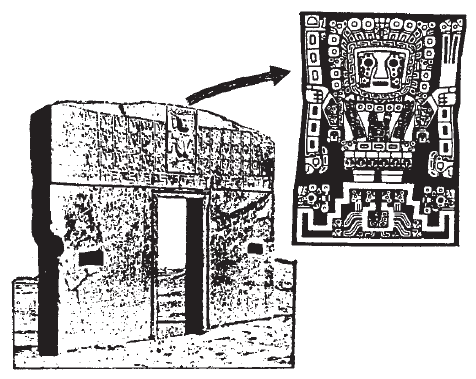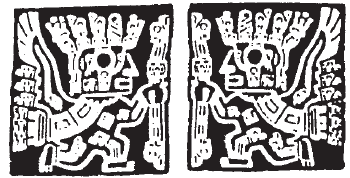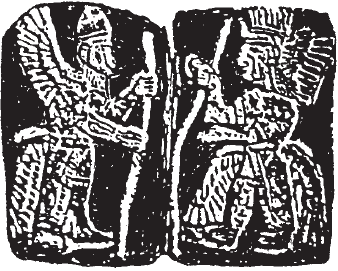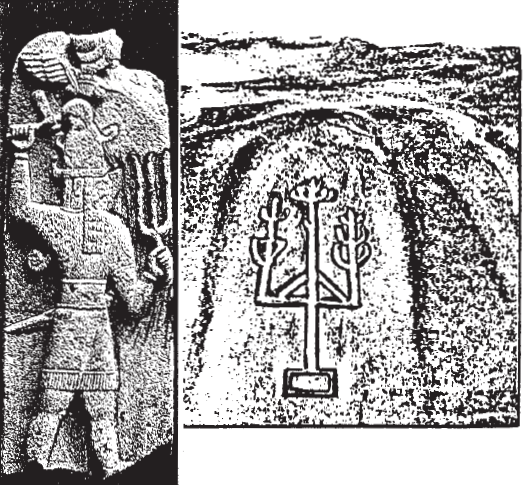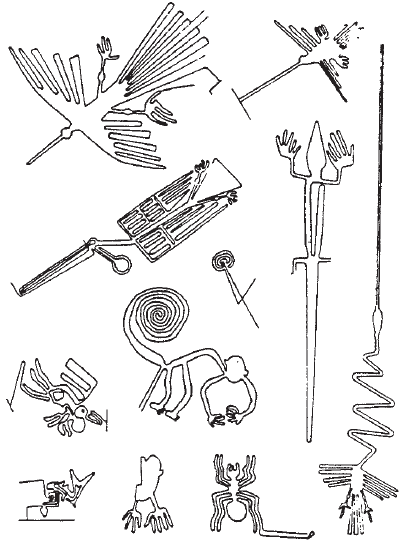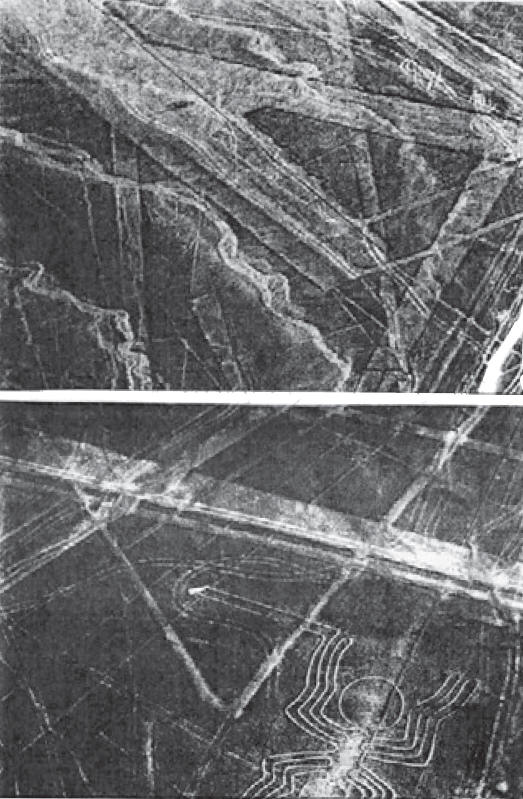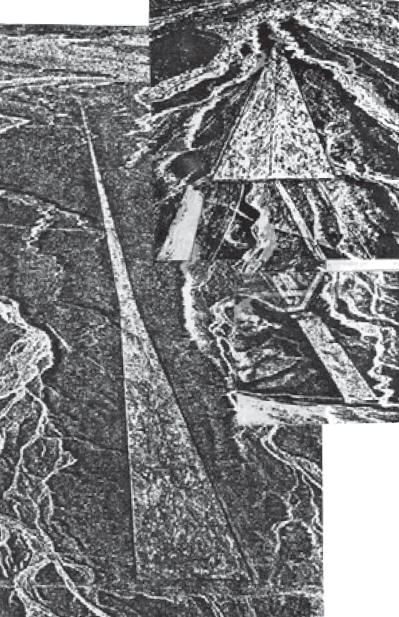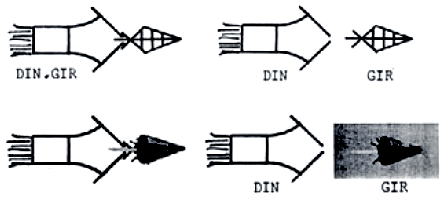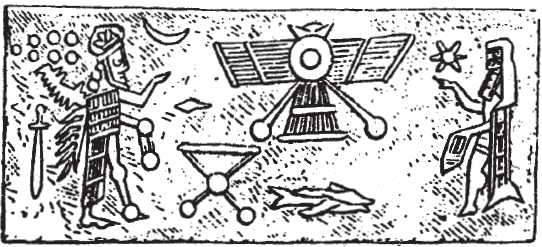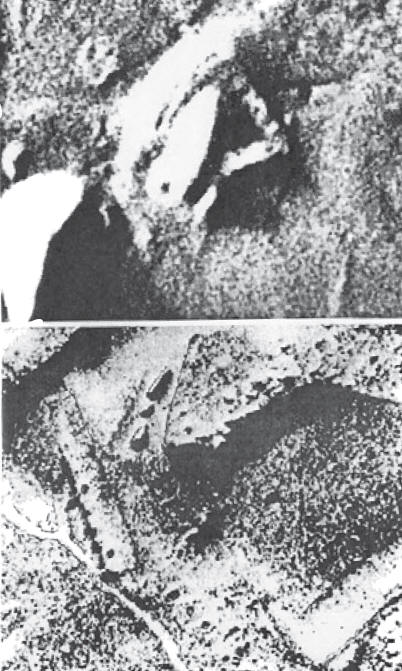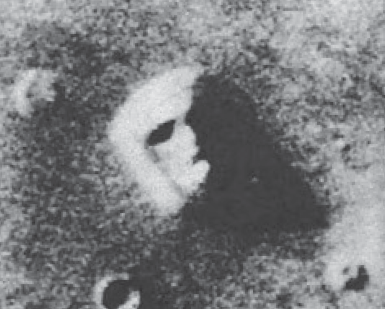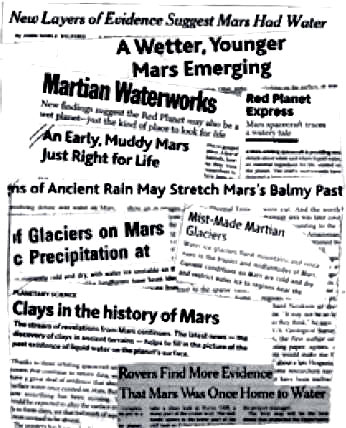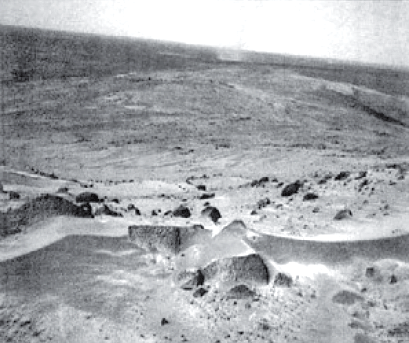|
WHEN THE GODS LEFT EARTH
It was a city that had been from Sumerian times on
an “Ur away from Ur” cult center of the “Moon god” Nannar/Sin.
Abraham’s family ended up residing there because his father Terah
was a Tirhu, an omen-priest, first in Nippur, then in Ur, and
finally in Nannar/Sin’s temple in Harran. After the demise of Sumer
by the nuclear Evil Wind, Nannar and his spouse, Ningal, made their
home and headquarters in Harran.
That
many centuries later Esarhaddon went to consult with an aging Sin
(“leaning on a staff ”) regarding the invasion of Egypt, and that
the escaping Assyrian royals made a last stand in Harran, serve to
indicate the continued important role played by Nannar/Sin and
Harran to the very end.
The sixteenth year of Nabupolassar was 610 b.c.e.—a memorable year,
the reader may recall, when Babylonian forces captured Harran from
the remnants of the Assyrian royal family and army, and when a
reinvigorated Egypt decided to seize the space-related sites. It was
then, Adda-Guppi wrote, that an angered Sin, removing his protection
(and himself ) from the city, packed up “and went up to heaven!”
While other survivors fled, Adda-Guppi stayed on.
Mourning, she,
As a ghost roaming the abandoned shrine,
Then, in the desolate sacred precinct, she found a robe that had once belonged to Sin.
To the despondent priestess, the find was an
omen from the god: suddenly he had given her a physical presence of
himself. She could not take her eyes off the sacred garb, not daring
to touch it except by “taking hold of its hem.” As if the god
himself was there to hear her, she prostrated herself and “in prayer
and humility” uttered a vow: “If you would return to your city, all
the Black-Headed people would worship your divinity!”
To achieve that, Adda-Guppi offered her god a deal: If he would return and then use
his divine powers to make her son Nabuna’id the next imperial king,
reigning over all the Babylonian and Assyrian domains, Nabuna’id
would restore the temple of Sin not only in Harran but also in Ur,
and would proclaim the worship of Sin as the state religion in all
the lands of the Black-Headed people!
The Moon god, Adda-Guppi wrote, liked the idea:
The god, Adda-Guppi wrote, accepted the deal:
Both sides kept their bargain. “I myself saw it fulfilled,”
Adda-Guppi stated in the concluding segment of her inscriptions: Sin
“honored his word which he spoke to me,” causing Nabuna’id to ascend
the Babylonian throne in 555 b.c.e.; and Nabuna’id kept his mother’s
vow to restore the Ehulhul temple in Harran, “perfecting its
structure.” He renewed the worship of Sin and Ningal (Nikkal in
Akkadian)—“all the forgotten rites he made anew.”
Figure 102
Sin, the inscriptions report, did not return alone. According to the
texts, he entered the restored Ehulhul temple in a ceremonial
procession, accompanied by his spouse Ningal/ Nikkal and his aide,
the Divine Messenger Nusku.
As a trained priest, he too recorded the place and the date: it was on the fifth day of the fourth month in the fifth year of the exile—594/593 b.c.e.—
Ezekiel stated at
the very beginning of his prophecies; and what he saw, appearing in
a whirlwind, flashing lights and surrounded by a radiance, was a
divine chariot that could go up and down and sideways, and within
it, “upon the likeness of a throne, the semblance of a man”; and he
heard a voice addressing him as “Son of Man” and announcing his
prophetic assignment.
The term Elohim, which is plural, has been traditionally translated “God” in the singular, even when the Bible itself clearly treats it in the plural, as in,
As readers of my books know, the biblical Adam tale is a rendering of the much more detailed Sumerian creation texts, where it was an Anunnaki team, led by Enki, that used genetic engineering to “fashion” the Adam.
The term Elohim, we have shown over and over
again, referred to the Anunnaki; and what Ezekiel reported was that
he had encountered an Anunnaki celestial craft — near Harran.
Ancient texts refer both to spacecraft and aircraft, and describe Enlil, Enki, Ninurta, Marduk, Thoth, Sin, Shamash, and Ishtar, to name the most prominent, as gods who possessed aircraft and could roam Earth’s skies—or engage in aerial battles, as between Horus and Seth or Ninurta and Anzu (not to mention the Indo-European gods).
Of all the varied
textual descriptions and pictorial depictions of the “celestial
boats” of the gods, the most appropriate to Ezekiel’s vision of a
Whirlwind appears to be the “whirlwind chariot” depicted at a site
in Jordan (Fig. 103) from which the Prophet Elijah was taken up to
heaven. Helicopter-like, it had to serve just as a shuttlecraft to
where full-fledged spacecraft were stationed.
Figure 103 The city, it will be remembered, went through a starving siege, a humiliating defeat, wanton looting, a Babylonian occupation, and the exile of the king and all the nobility. Arriving there, Ezekiel saw a scene of complete breakdown of the rule of law and of religious observances.
Wondering what was going on, he heard the remnant sitting in mourning, bewailing (8: 12; 9: 9):
This was, we suggest, the reason why Nebuchadnezzar dared attack Jerusalem again and destroy Yahweh’s temple. It was an outcry virtually identical to what Adda-Guppi had reported from Harran:
One cannot be certain how or why events occurring in northern Mesopotamia gave rise to a notion in distant Judea that Yahweh, too, had left the Earth, but it is evident that word that God and gods departed had spread far and wide.
Indeed, tablet VAT 7847, which we mentioned earlier in connection with the solar eclipse, states the following in a prophetic section regarding calamities that last 200 years:
Like several other documents of the “Akkadian Prophecies” genre,
scholars deem this text, too, a “post-event prophecy”—a text that
uses events that had already happened as the basis for predicting
other future events. Be that as it may, we have here a document that
considerably expands the divine exodus: the angered gods, led by
Enlil, flew away from their lands; it was not just Sin who was
angered and left.
Here is, in full, what it says:
What is common to all these texts are the assertions that:
We are further
informed that the departure was accompanied by unusual celestial
phenomena and some terrestrial disturbances. These are aspects of
the Day of the Lord as prophesied by the biblical Prophets:
The
Departure was related to the Return of Nibiru—the gods left Earth
when Nibiru came.
It seems that the latter is the case, for it is probably no coincidence that the era of biblical prophecy regarding the nations’ sins and the coming judgment on the Day of the Lord began with Amos and Hosea circa 760/750 b.c.e.—two centuries before the Return of Nibiru!
For
two centuries the Prophets, from the only legitimate place of the
“Bond Heaven-Earth”—Jerusalem—called for justice and honesty among
people and peace among nations, scorned meaningless offerings and
worship of lifeless idols, denounced wanton conquests and pitiless
destruction, and warned one nation after another—Israel included—of
the inevitable punishments, but to no avail.
Enlil, Enki’s half-brother and rival for the succession, came and was put in overall command.
When the Anunnaki toiling in the mines mutinied, Enki suggested that a “Primitive Worker” be fashioned; it was done by genetically upgrading an existing Hominid. And then the Anunnaki began to “take the daughters of the Adam as wives and had children by them” (Genesis 6), with Enki and Marduk breaking the taboo.
When the Deluge came, the outraged Enlil said “let mankind
perish,” for “the wickedness of Man was great on the Earth.” But
Enki, through a “Noah,” frustrated the plan. Mankind survived,
proliferated, and in time was granted civilization.
On their state visit to Earth
circa 4000 b.c.e., Anu and Antu visited the post-Diluvial gold land
on the shores of Lake Titicaca.
But while Enki and
Enlil accepted the territorial divisions, Enki’s son Marduk never
gave up the strife for supremacy that included control of the olden
space-related sites. It was then that the Enlilites began to prepare
alternative spaceport facilities in South America. When the
post-Diluvial spaceport in the Sinai was
wiped out with nuclear
weapons in 2024 b.c.e., the facilities in South America were the
only ones left entirely in Enlilite hands.
Its main remains consist of a row of four collapsed structures, each made of a single hollowed-out giant boulder (Fig. 104).
Figure 104
Each such hollowed-out set of chambers was completely inlaid
inside with gold plates, held in place by gold nails—an incredible
treasure hauled off by the Spaniards when they arrived in the
sixteenth century. How such dwellings were so precisely hollowed out
of the rocks and how four huge rocks were brought to the site remain
a mystery.
The archaeological finds in the place included a large number of unusual stone blocks that were precisely cut, grooved, angled, and shaped; some of them are shown in Fig. 105.
Figure 105 One does not need an engineering degree to realize that these stones were cut, drilled, and shaped by someone with incredible technological ability and sophisticated equipment; indeed, one would doubt whether stones could be so shaped nowadays.
The puzzle is compounded by the mystery of what purpose did these technological miracles serve; obviously, for some unknown yet highly sophisticated purpose.
If it was to
serve as casting dies for complex instruments, what—and whose— were
those instruments?
A tourist favorite is a stone gateway known as the Gate of the Sun, a prominent structure that was also cut from a single boulder, with some of the precision exhibited at Puma-Punku. It probably served an astronomical purpose and undoubtedly a calendrical one, as the carved images on the archway indicate; those carvings are dominated by the larger image of the god Viracocha holding the lightning weapon that clearly emulated the Near Eastern Adad/Teshub (Fig. 106).
Indeed, in The Lost Realms I have suggested that he was Adad/Teshub.
Figure 106
The Gate of the Sun is so positioned that it forms an astronomical observation unit with the third prominent structure at Tiwanaku, called the Kalasasaya. It is a large rectangular structure with a sunken central courtyard and is surrounded by standing stone pillars.
Posnansky’s suggestion that the Kalasasaya served as an observatory has been confirmed by subsequent explorers; his conclusion, based on Sir Norman Lockyer’s archaeo-astronomy guidelines, that the astronomical alignments of the Kalasasaya show that it was built thousands of years before the Incas was so incredible that German astronomical institutions sent teams of scientists to check this out.
Their report, and subsequent
additional verifications (viz. the scientific journal Baesseler
Archiv, volume 14) affirmed that the Kalasasaya’s orientation
unquestionably matched the Earth’s obliquity either in 10,000
b.c.e. or 4000 b.c.e.
Based on various finds and the images on the Gate of the Sun (Fig. 107a) and their similarity to depictions in ancient Hittite sites in Turkey (Fig. 107b), I have suggested that the gold (and tin!) obtainment operations there were supervised by Ishkur/Adad, Enlil’s youngest son.
Figure 107a
His domain in the Old World was Anatolia, where he was worshipped by the Hittites as Teshub, the “weather god” whose symbol was the lightning rod; such a huge symbol, enigmatically carved on a steep mountainside (Fig. 108), can be seen from the air or from out in the ocean in the Bay of Paracas, Peru, a natural harbor downhill from Tiwanaku.
Nicknamed the
Candelabra, the symbol is 420 feet long and 240 feet wide, and its
lines, which are 5 to 15 feet wide, have been etched into the hard rocks to a depth of about 2 feet— and no
one knows by whom and when or how, unless it was Adad himself who
wanted to declare his presence.
Called by some “the world’s largest artworks,” a vast area (some 200 square miles!) that extends eastward from the pampa (flat desert) to the rugged mountains was used by “someone” as a canvas to draw on it scores of images; the drawings are so huge that they make no sense at ground level—but when viewed from the air, clearly represent known and imaginary animals and birds (Fig. 109).
Figure 109
The drawings were made by removing the
topsoil to a depth of several inches, and were executed with a unicursal line—a continuous line
that curves and twists without crossing over itself. Anyone flying
over the area (there are small planes at the service of tourists
there) invariably concludes that “someone” airborne has used a
soil-blasting device to doodle on the ground below.
Straight without fault, these flat stretches—sometimes narrow, sometimes wide, sometimes short, sometimes long— run straight over hills and vales, no matter the shape of the terrain.
Figure 110 There are some 740 straight “lines,” sometimes combined with triangular “trapezoids” (Fig. 111).
They frequently criss-cross each other without rhyme or reason, sometimes running over the animal drawings, revealing that the lines were made at different times.
Figure 111 Various attempts to resolve the mystery of the Lines, including those by the late Maria Reiche, who made it her lifelong project, failed whenever an explanation was sought in terms of “it was done by native Peruvians”—people of a “Nazca culture” or a “Paracas civilization” or the likes.
Studies (including some by the National Geographic Society) aimed at uncovering astronomical orientations for the lines— alignments with solstices, equinoxes, this or that star—led nowhere.
For those who rule out an “Ancient
Astronauts” solution, the enigma remains unresolved.
That the “celestial
chambers” of the Anunnaki did emit such exhausts is indicated by the
Sumerian pictograph (read DIN.GIR) for the space gods (Fig. 112).
Figure 112 There are no eyewitness-report texts regarding the airborne craft and flights in Nazca; there are, as we have shown, texts from Harran and Babylon regarding the flights that undoubtedly used the Landing Place in Lebanon. The eyewitness reports relating to those departure flights and Anunnaki’s craft include the testimony of the Prophet Ezekiel and the inscriptions of Adda-Guppi and Nabunaid.
The place was the good old Way Station on Mars, from which
the long-distance spaceships raced to intercept and land on the
orbiting Nibiru.
Figure 113
Benefiting from Mars’s lower gravity compared to that of Earth, the
Anunnaki had found it easier and more logical to first transport
themselves and their cargos in shuttlecraft from Earth to Mars, and
there transfer to reach Nibiru (and vice versa).
The evidence showed that Mars once had water, and
included photographs of walled structures, roads, a hub-like compound
(Fig. 114 shows just two such photographs)—and the famous Face (Fig.
115).
But due to persistent efforts, enough U.S., Soviet, and European unmanned spacecraft have managed to reach and explore Mars in the last two decades, that by now the scientific journals—of the same “Doubting Thomases” of the 1970s—have been filled with reports, studies, and photographs announcing:
Figure 114
Back to Gold for Humans and Others...
|
